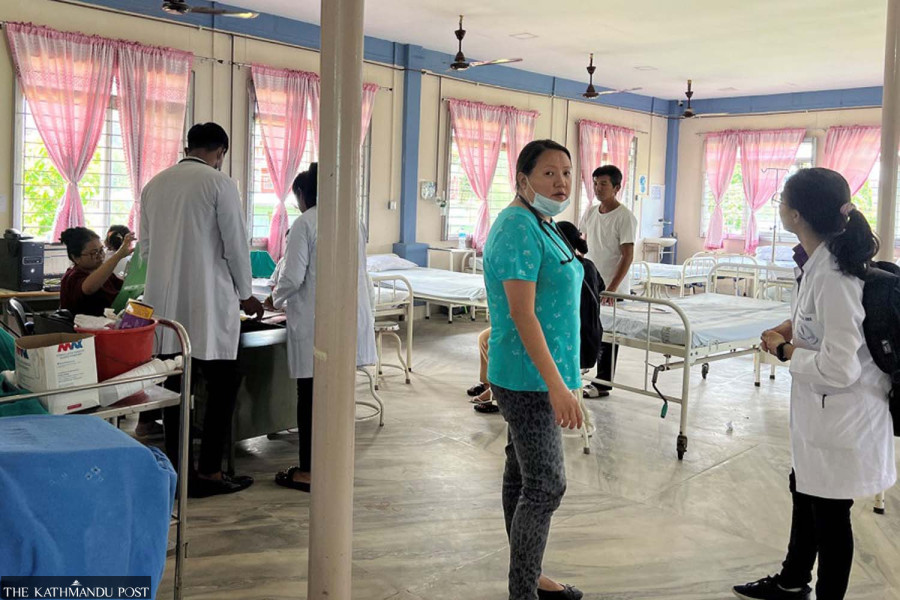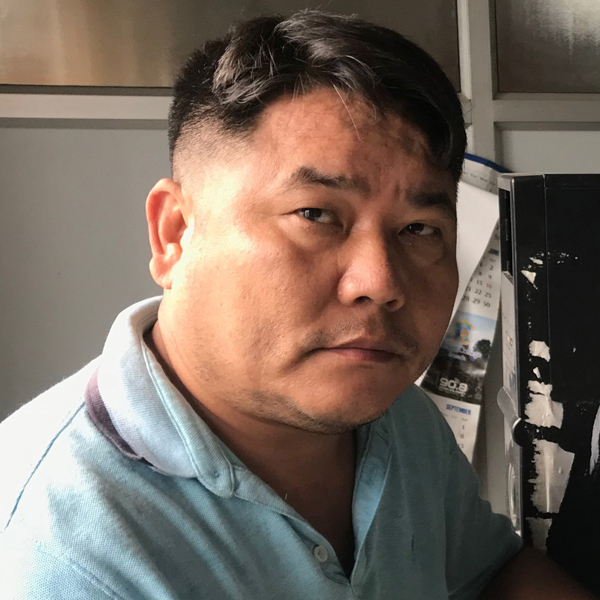Health
BPKIHS sets up separate dengue treatment facility on its premises
A 30-bed ward came into operation on Sunday to tackle the rising cases of dengue in Dharan and its neighbouring areas.
Pradeep Menyangbo
The BP Koirala Institute of Health Sciences brought a separate 30-bed hospital into operation on Sunday to tackle the rising cases of dengue in Dharan and its neighbouring areas.
A separate treatment facility has started to accommodate dengue patients after the institution’s central emergency ward and dengue clinic could not cope with the case flow.
According to BPKIHS acting vice-chancellor Prof Dr Prahlad Karki, the 100-bed Covid-19 hospital set up during the pandemic was transformed into a temporary dengue care centre.
“The number of dengue patients has shot up in the past few weeks,” said Karki. “An overwhelming number of dengue patients have been visiting the hospital daily.”
The building was constructed eight years ago by the Urban Development and Building Department with the help of the Peace Fund Secretariat of the then Peace and Reconstruction Ministry at a cost of Rs120 million. It was handed over to the BPKIHS for the free treatment of the injured and disabled victims of the decade-long Maoist insurgency.
In the last couple of days, 85 percent of the 50 beds in the observation ward were filled with dengue patients, prompting the authorities to set up the separate facility, Karki said.
In the last few days, 60–75 people infected with dengue have been coming to the central emergency ward of the hospital.
“Despite limited manpower, we have set up a separate dengue hospital so that dengue patients would not be deprived of treatment for a lack of beds,” said Karki.
BPKIHS deputy director Dr Indra Limbu said that the dengue hospital is being funded through internal resources.
“We have appointed two senior residents, one consultant doctor and five nurses in one shift for the dengue hospital,” said Limbu. “Two ICU beds have also been set aside for dengue patients.”
BPKIHS joint spokesperson Chudamani Pokharel said that admitting dengue patients to a separate facility would take the pressure off the central emergency ward, and treating those who are seriously ill due to other reasons would be easier.
The institution’s dengue clinic will continue to operate at the same location, said Pokharel. Only those who test positive for dengue and need additional treatment would be admitted to the new ward.
Pokhrel added that depending on the number of patients, the institution could utilise the resources available to it for treating up to 100 dengue cases.
“As of now, two dengue patients are undergoing treatment at the new facility and other patients suffering from the disease are being gradually shifted from the emergency and observation wards of the main hospital,” Pokhrel said.
Dengue cases see an uptick during the monsoon season across the country. Although the post-monsoon season is considered fertile for dengue transmission, Nepal has witnessed outbreaks of the deadly disease since the start of the year and during the pre-monsoon seasons as well. Experts say the virus has become endemic, as cases are being reported throughout the year.
In the past one-and-a-half-months, as many as four people have died of dengue at the BPKIHS. According to the institute, around 2,000 people tested positive for dengue virus in the period.
According to Pokharel, from July 14 to 20, the dengue clinic at BPKIHS had examined 638 people. Of the total, 465 tested positive for the virus.
In 2019, Dharan faced an outbreak of dengue with around 11,000 people infected, according to the sub-metropolis’s health unit.
Last year, at least 88 people died and over 54,000 were infected in 77 districts of the country. Hospitals in the Kathmandu valley were overwhelmed with dengue patients, with many complaining that they were deprived of treatment.
Dengue is transmitted by female Aedes aegypti and Aedes albopictus mosquitoes. The same vector also transmits chikungunya, yellow fever, and Zika, according to the World Health Organisation.




 20.12°C Kathmandu
20.12°C Kathmandu















